The Camino del Norte starts in Irun and ends, after 825 km, in Santiago de Compostela. This pilgrimage route stretches along the northern Spanish coast. During the Camino de Norte you will pass several interesting cities. Think of ‘food paradise’ San Sebastian, known for its famous pintxos and many Michelin restaurants. Or Bilbao. This modern, hip city of more than a million inhabitants symbolizes the progressiveness of the Basque Country, the world-famous Guggenheim museum is the best example of this.
But Santander is also worth a visit. But there is even more to discover during this Camino del Norte. In this blog we list the 10 hidden gems of the Camino del Norte for you.
Discover the Camino del Norte’s Lesser-Known Treasures
While the Camino del Norte is famed for its stunning coastal scenery and vibrant cities, it’s the lesser-known spots that often capture the hearts of pilgrims. Beyond the well-trodden paths lies a series of hidden treasures, each offering a unique glimpse into the rich cultural tapestry and natural beauty of northern Spain. As we delve into these secret gems, you’ll find enchanting locales that provide tranquility and a deeper connection to the historical journey of countless pilgrims.
1. Playa Torimbia
This beach ranks 10th out of 101 beaches in Asturias. Known for its crystal turquoise water and white sand. A wonderful place to relax after a walk during your Camino del Norte!
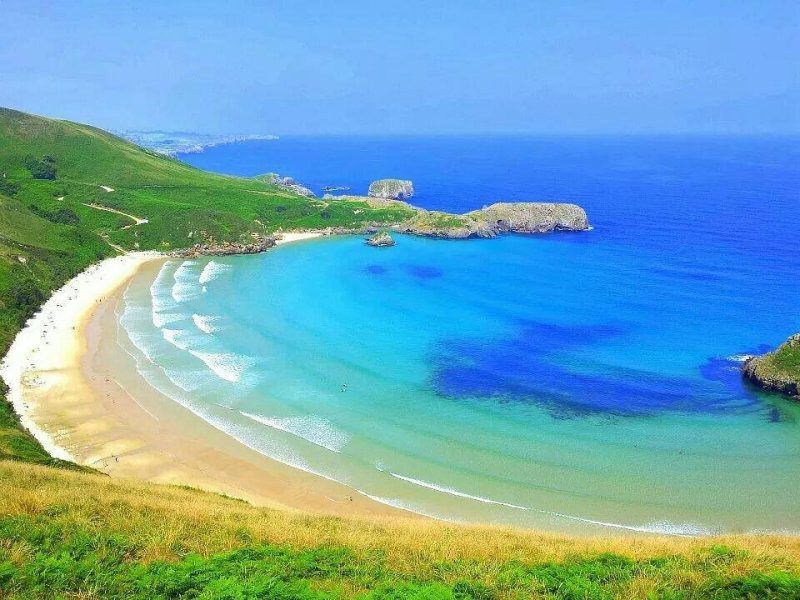
2. Cider in Villaviciosa
Villaviciosa is also called the ‘apple capital’ of Spain because of its excellent quality apple cider. During your Camino del Norte you can visit apple orchards and cellars to taste this delicious drink. Also notice how the locals pour this spicy drink from a huge height…
3. Bufones de Arenillas
Make sure you stop at the Bufones de Arenilla during your Camino del Norte. It is a spectacular event when you see the waves leading through blowholes to eruptions up to 20 meters high. The result resembles a geyser. OK, you have to be a bit lucky, but even when the sea is calm, you can still hear the special sound of the water and the sea.
4. Santillana del Mar
Santillana del Mar has been voted the most beautiful village in Spain several times. It has retained its medieval atmosphere and that makes this village unique. It consists of a group of wooden and stone houses, accentuated by balconies and cobbled corridors.
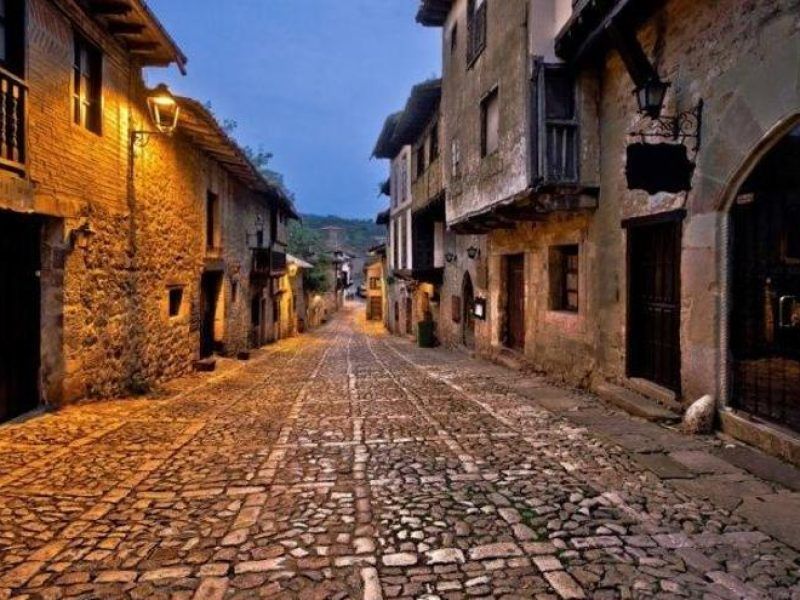
5. Comillas
Originally a fishing port, thanks to Gaudí’s work, Comillas became a visited city of modernist style where art can be seen in its striking palaces. It all started in 1878 when Eusebio Güell commissioned Gaudí to build his in-laws’ chapel. A must see on the Camino del Norte!
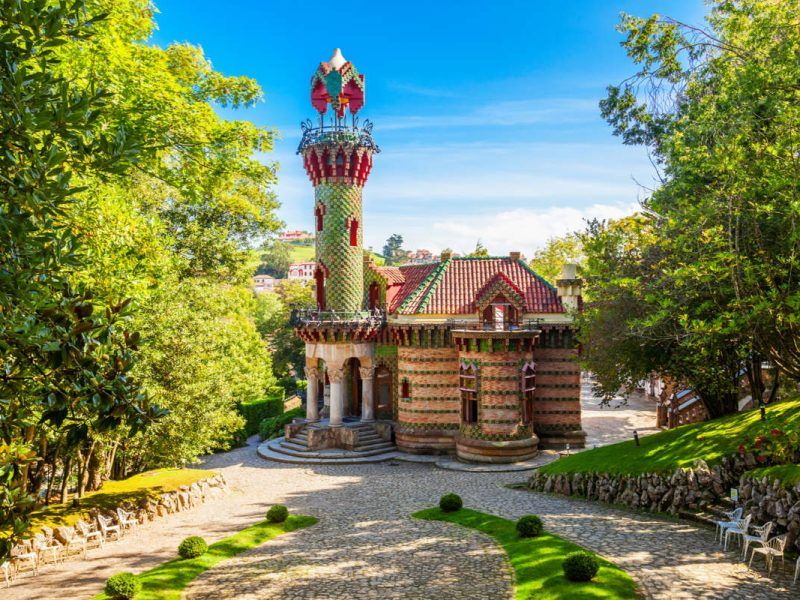
6. Playa Gulpiyuri
This is a very, very small, beautiful and much visited sea beach. What is special is that it is not located by the sea, but inland. How is that possible? This beach was declared a natural monument in 2001 and can only be reached on foot from San Antolin beach or from the town of Naves.
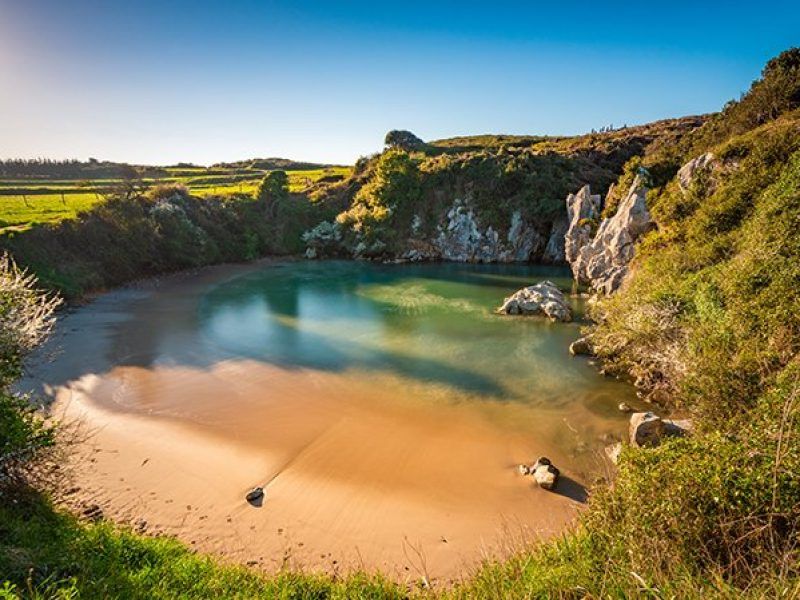
7. San Juan de Gatzelugatxe
San Juan de Gatzelugatxe is connected to the mainland by a stone bridge. You climb a narrow path with no less than 241 steps. When you reach the top, you will see a bell on the facade of the church. According to legend, when San Juan reached Bermeo, he took three long steps before reaching the chapel. The last of these is on the last step leading to the chapel, where his “footprint” is located, which brings good luck to those who touch it. Recordings for the famous series ‘Game of Thrones’ were also made at San Juan de Gatzelugatxe.
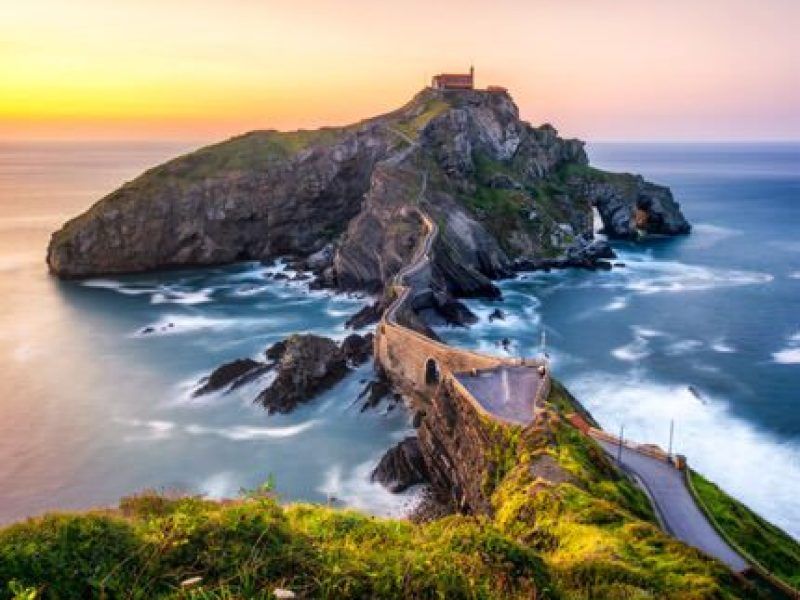
8. San Vicente de la Barguera
The snow-capped mountains of the Picos de Europa Natural Park on one side and the sea on the other. San Vicente is a fishing village on the Camino del Norte that overlooks a harbour, beaches and the ocean. According to legend, the Virgen de la Barquera, the Mother Mary and patroness of the city, arrived here on a small boat.
9. Ribadesella and his tito bustillo
An active fishing village built on both sides of where the River Sella flows into the Atlantic Ocean. Within walking distance of the city and upstream is Tito Bustillo’s cave. Discovered in 1968 and most famous for its gallery of painted horses.
10. Monestary of Santa Marina
The Monastery of Santa María de Sobrado was founded in 952 by Hermenegildo Alóitez, Count of Présaras, and was rediscovered in the mid-20th century after being abandoned for a long time. It has been declared a national historical-artistic monument and is one of the most important monasteries in the province of A Coruña.
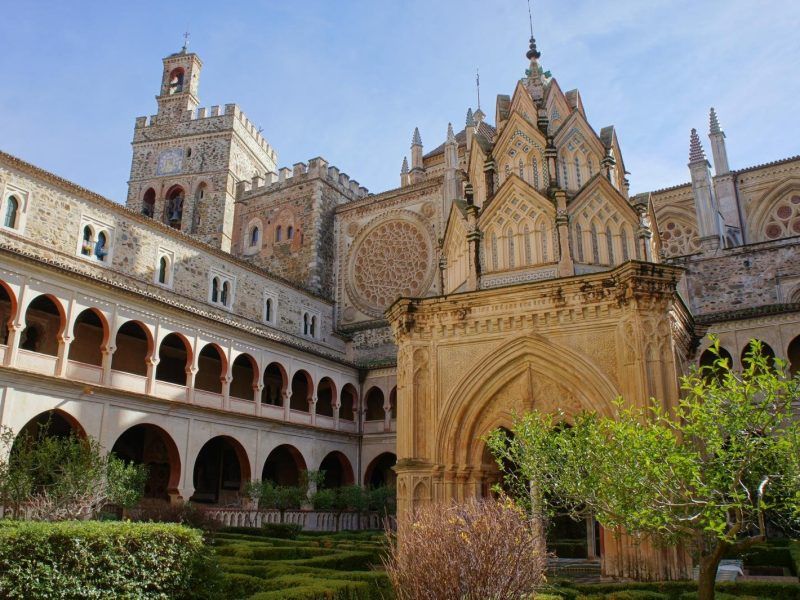
Embracing the Hidden Wonders of the Camino del Norte
As our journey through the Camino del Norte’s hidden gems concludes, it’s clear that these lesser-known sites are what make the pilgrimage truly memorable. From secluded beaches to ancient monasteries, each location adds its own story and spirit to the path. These spots encourage us to slow down, explore, and appreciate the quieter moments that might otherwise be overlooked.
Your Journey Awaits: Discover Your Own Path
Whether you’re drawn to the serene beauty of Playa Torimbia or the historical allure of the Monastery of Santa Marina, the Camino del Norte invites you to discover its secrets at your own pace. So, lace up your boots, pack your spirit of adventure, and set out to find the hidden wonders that await along this ancient route. Who knows what personal discoveries will accompany the physical journey as you walk the less traveled paths of the Camino del Norte?
What is the best section of the Camino del Norte for hidden gems?
While every stage has something unique, most pilgrims highlight the stretch between Llanes and Ribadesella in Asturias as the most rewarding for discovering secluded beaches, dramatic cliffs, and authentic fishing villages off the tourist trail.
Can you swim on the Camino del Norte?
Absolutely! The northern route passes through some of Spain’s most beautiful beaches — including Playa de Torimbia and Playa Gulpiyuri — where pilgrims often take a break to swim or relax after a day of walking.
How many days does it take to walk the Camino del Norte?
Walking the entire 825 km route usually takes between 33 and 37 days, depending on your pace and the number of rest days. Many walkers also choose to complete shorter sections, such as Irun to Bilbao or Oviedo to Santiago, which can be done in one to two weeks.


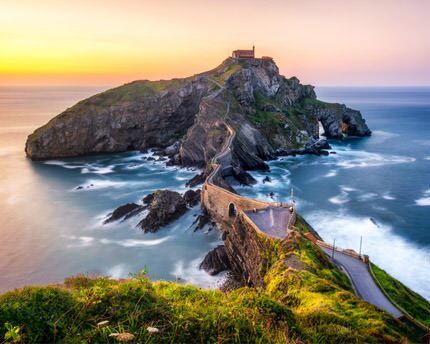
Comment (0)